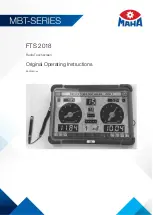
9.2 The Merge Filter
9.2 The Merge Filter
The following types of data may be filtered out:
<cM> Channel Mode Messages are special controller
messages and are used to set MIDI instruments
to certain operation modes. Furthermore, they
mute all voices sounding at the moment. To
avoid unpleasant results - described at the
beginning of this section - they should be
filtered out.
<Ao>
Controller #123 is the "famous" All-Notes-Off
message. Normally, it will be sufficient to filter
out this mode message.
<Sr>
System Real-Time Messages are used to
synchronize the entire MIDI system. It will
hardly happen that two MIDI devices send
contradicting Real-Time Messages, however,
this might occur - for instance, if the data from a
sequencer and from a drum computer is
merged. If so, at least the Real-Time Messages
sent by one unit should be filtered out.
<cL>
The MIDI Clock is one portion of the real-time
messages mentionend above; like a
metronome it determines the tempo of the
sequencer, drum computer, arpeggiators. etc.
hooked up to the system. Of course, only one
tempo can be used. Therefore, you should use
the MIDI clock filter to prevent anything but the
master's tempo information (in general, this is
your sequencer) from reaching the merger
output.
<rS>
This filter differs from the remaining filter types
in that it does not filter incoming data but
influences outputting of the already merged
data.
The Running Status is a process used for
compact transmission of MIDI data, for several
consecutive notes, the "Note On" status byte is
sent only once.
However, this process has not been part of the
original MIDI standard. Therefore, if you are
encountering problems with older synthesizers,
MIDI BAY Manual
















































